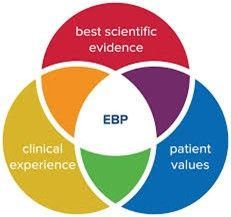A Trauma-Informed Level System: Don’t Swing the Pendulum
A trauma-informed level system is a controversial subject with behavioral health organizations (particularly residential facilities). Traditionally, on one end of the pendulum organizations used a level system to incentivize youths to improve their behaviors. Youths would start at the lowest level when they arrived in care, then work their way up to higher levels as their behavior improves. However, research and other findings proposed that these methods were not trauma-informed. The studies found youths lost privileges or were dropped a level due to behaviors created by trauma triggers. Therefore, the level system was proclaimed to be harmful to youths in foster care and recommended to be disbanded.
Then organizations moved to the other end of the pendulum. At the request of governmental child welfare agencies, they eliminated the level system. Subsequently, youths felt unmotivated to stop risky behaviors. Smoking, drug use, assaults, and other behaviors increased on residential campuses as well as in foster homes. And caregivers had no means to modify a youth’s behavior. Rather than be focused on their personal motivation for improved behavior, youths would be more influenced by the behaviors of peers. According to research, youths associating with peers who have the same behavioral difficulties can mirror those behaviors and increase, rather than decrease their pathology.
Neither approach seems to work because they do not address the adolescent’s need to address the risk vs. benefit of their actions. Because using a trauma-informed level system requires an understanding of how adolescents function. In Dr. Frances Jensen’s book, The Teenage Brain, she discusses how adolescents define their actions by how the risk of the event compares with the benefit. As long as the risk is worth it, they will engage in the action. This plays into the need for a motivating factor to help youths improve their functioning. They won’t do it on their own, but if the rewards of a better level in their home improve their life, then they will adapt their behaviors. Besides, if the level system works in the real world, why can’t it work in residential facilities? Employees start at an orientation phase and then have opportunities to receive higher levels of reward (benefits, salary increases, promotions, perks).
Creating a trauma-informed level system means using the principles of trauma-informed care and incorporating them into the platform. This means using the following:
1. Using reinforcements and consequences. When youths with trauma receive a positive interaction following their behavior, it leads to an increased repetition of that behavior. The same holds for consequences; it is based on their behaviors and is non-punitive. Even offering praise for youth returning after an AWOL for coming back lets them know they are valued and missed.
2. Get the youths’ buy-in and feedback about the plan. To make the level system work, hold monthly meetings about the incentives and reinforcements. When youths incorporate what they want, then they participate in collaborative decision-making. Teenage girls may like spa treatments like manicures and pedicures, makeup, and other hygiene incentives. Teenage boys may like access to video games, courses on how to get along with girls, and better clothing.
3. Establish levels based on achievable goals and prohibit youths from going down levels. The first level focuses on intensive services to help stabilize the youth. Then each level afterward is based on achieving goals or behaviors, along with additional rewards (allowance, curfew, use of electronic equipment, and passes). But the youths never go down a level; they only stay at a level if their behavior doesn’t improve. This approach lets the youth know they can only go up the levels, not down.
Praxes offers training on establishing trauma-informed level systems and consulting. For more information, please contact us.




